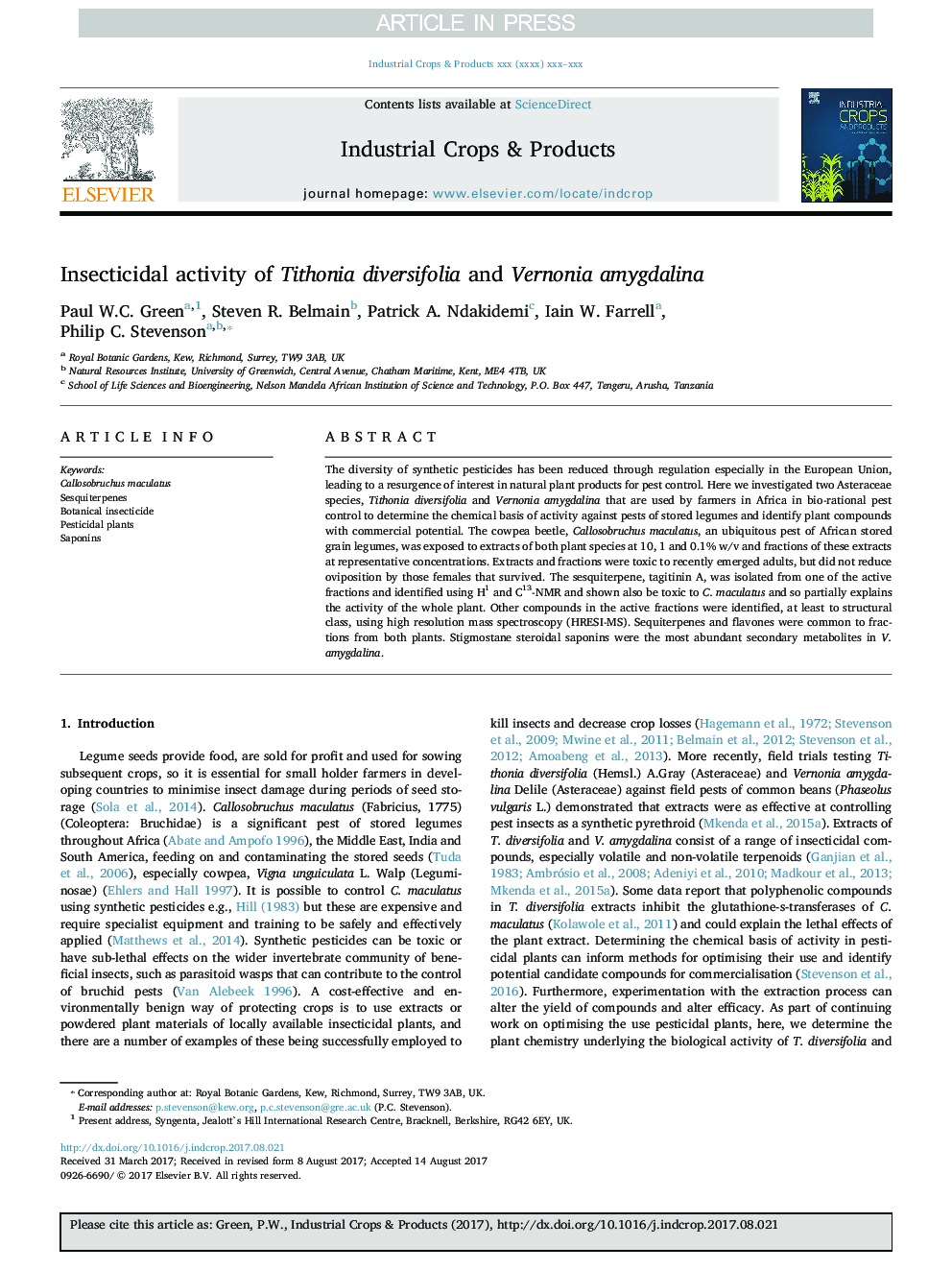| Article ID | Journal | Published Year | Pages | File Type |
|---|---|---|---|---|
| 8880991 | Industrial Crops and Products | 2017 | 7 Pages |
Abstract
The diversity of synthetic pesticides has been reduced through regulation especially in the European Union, leading to a resurgence of interest in natural plant products for pest control. Here we investigated two Asteraceae species, Tithonia diversifolia and Vernonia amygdalina that are used by farmers in Africa in bio-rational pest control to determine the chemical basis of activity against pests of stored legumes and identify plant compounds with commercial potential. The cowpea beetle, Callosobruchus maculatus, an ubiquitous pest of African stored grain legumes, was exposed to extracts of both plant species at 10, 1 and 0.1% w/v and fractions of these extracts at representative concentrations. Extracts and fractions were toxic to recently emerged adults, but did not reduce oviposition by those females that survived. The sesquiterpene, tagitinin A, was isolated from one of the active fractions and identified using H1 and C13-NMR and shown also be toxic to C. maculatus and so partially explains the activity of the whole plant. Other compounds in the active fractions were identified, at least to structural class, using high resolution mass spectroscopy (HRESI-MS). Sequiterpenes and flavones were common to fractions from both plants. Stigmostane steroidal saponins were the most abundant secondary metabolites in V. amygdalina.
Related Topics
Life Sciences
Agricultural and Biological Sciences
Agronomy and Crop Science
Authors
Paul W.C. Green, Steven R. Belmain, Patrick A. Ndakidemi, Iain W. Farrell, Philip C. Stevenson,
